The United States has a long mining and exploration history and is rich in base and precious metals as well as new energy metals and uranium. Here are seven companies with significant mines and development projects to watch.
American Pacific Mining
American Pacific Mining (CSE: USGD; US-OTC: USGDF) has been releasing results from its past-producing Madison copper-gold project in Montana throughout September, and in August wrapped up a 6,036-metre drill program at its other key asset, the Palmer copper-zinc volcanogenic massive sulphide (VMS) project in southeastern Alaska.
Initial infill and extension drilling this summer at Madison demonstrated that significant grades continue beyond previously mined out areas. Highlights included 12.3 metres of 10.36 grams gold and 0.88% copper from 115 metres downhole in hole APMMAD24-06; 2.9 metres of 3.17 grams gold and 2.41% copper from 145 metres in APMMAD24-08; and 8.1 metres of 3.66% copper starting from 187.2 metres in APMMAD24-09.

A rock chip sample of high-grade copper taken from underground workings at the Madison project in Montana. Credit: American Pacific Mining
The company also recently accessed the upper levels of the mine and collected four samples from the ribs of the old workings. Sample highlights released at the end of September included 45.5% copper and 2.17 grams gold per tonne and 31% copper and 8.4 grams gold.
At Palmer, the company drilled 6,036 metres across 19 holes this year. The program, funded under a joint venture with Dowa Metals & Mining, the owner of Japan’s largest zinc smelter, focused on building upon the results of the 2023 campaign.
The final batch of 2023 assay results, released in January, included the four most significant copper intercepts ever drilled at Palmer. These included 43.8 metres of 6.54% copper, 3.15% zinc, 0.42 gram gold and 27.97 grams silver (8.22% copper-equivalent) from 170 metres downhole in hole CMR23-172.
A preliminary economic assessment (PEA) for Palmer, released in 2019 outlined a project with a US$266-million post-tax net present value (at 7% discount rate) over an 11-year life. Capital costs were pegged at US$278 million, with a 21% post-tax internal rate of return and a 3.3-year payback period. Life-of-mine production is forecast at about 1 billion lb. of zinc, 196 million lb. of copper, 18 million oz. of silver and 91,000 oz. of gold.
American Pacific Mining has a market cap of about $33 million.
Hudbay Minerals
At the end of August, Hudbay Minerals (TSX: HBM; NYSE: HBM) received its Aquifer Protection permit for the Copper World project in southern Arizona, bringing the proposed open pit mine one step closer to production.
The permitting process for the first stage is expected to require only state and local permits and management continues to work on securing the Air Quality Permit, the last key state-level permit required, Hudbay says.
Copper World, one of the highest-grade open pit copper projects in the Americas, is expected to produce 85,000 tonnes of copper a year over an initial mine life of 20 years at average cash costs and all-in sustaining costs of US$1.47 and US$1.81 per lb. copper, respectively.

Hudbay’s Copper World project in southern Arizona. Credit: Hudbay
A prefeasibility study last year on the first stage outlined an after-tax net present value (at an 8% discount rate) of US$1.1 billion, with a 19% internal rate of return at a copper price of US$3.75 per pound. Capital costs were pegged at US$1.3 billion with a payback of just under six years.
Copper World has 1.2 billion measured and indicated tonnes grading 0.42% copper for 5 million lb. of in-situ copper
Hudbay received a favourable ruling last year from the U.S. Court of Appeals for the Ninth Circuit Court that reversed the U.S. Fish and Wildlife Service’s designation of the Copper World area as a critical habitat for jaguars. Hudbay said at the time that the ruling won’t impact the state permitting process for Stage 1 but is expected to simplify federal permitting for the second stage.
Copper World, formerly referred to as Rosemont, is about 45 km southeast of Tucson in Pima County.
Hudbay Minerals has a market cap of about $5 billion.
Lion Copper and Gold
Lion Copper and Gold (TSXV: LEO; US-OTC: LCGMF) released assays in September from exploration drilling at its Yerington and MacArthur deposits, part of the company’s Yerington copper project in Nevada, 81 km southeast of Reno.
Drill highlights from Yerington included a 128-metre interval starting from surface of 0.12% total copper in drillhole YM-047, including a 16-metre total copper intercept of 0.36%. Total copper refers to total copper grade sent to the mill for metallurgical recovery by flotation. Drill hole YM-047A returned 1,371 metres of 0.2% total copper starting from 194 metres downhole.
At MacArthur, assays included a 9-metres of 0.21% total copper in hole QM-336 starting from 31 metres,and 43 metres of 0.22% total copper starting from 53 metres in hole QM340.
Rio Tinto’s (ASX: RIO; LSE: RIO; NYSE: RIO) Nuton division has an option to earn up to 65% of the Yerington project from Lion Copper and Gold.
A 2023 PEA envisioned an open pit and heap-leach operation using Nuton technologies to recover cathode copper from primary sulphide materials, which would eliminate the need for a concentrator, tailings impoundment and smelter operations.
The study outlined a 12-year mine life at Yerington and MacArthur producing an average of 117 million lb. copper a year or a total of 1.4 billion lb. of the metal at average operating costs of US$2.20 per lb. of payable copper. At a US$3.85 per lb. copper price, the post-tax net present value (at a 7% discount rate) came to US$356 million and the internal rate of return to 17.4%. Capital costs were pegged at US$413 million with an after-tax payback period of five years.
Lion Copper and Gold has a market cap of roughly $27 million.
MP Materials
This summer, California rare earths producer MP Materials (NYSE: MP) signed an US$11-million supply contract with the U.S. Department of Defense for rare earths neodymium and praseodymium (NdPr) oxide, the primary ingredient in permanent magnets. It also completed an agreement with an unnamed global carmaker for a “significant volume” commitment, the company reported in August.
MP’s Mountain Pass mine, among only two producing rare earths mines in the Americas, hosts one of the world’s richest deposits of rare earth elements. In each of the last three calendar years, production of rare earth oxides in concentrate from the mill has exceeded 41,000 tonnes and over the next four years the company plans to increase that to 60,000 tonnes annually. About 15% of the rare earth oxides contained in its concentrate is NdPr.
Last year, MP Materials re-commissioned the processing facilities at Mountain Pass and began producing separated and refined rare earth products from the concentrate. The facility produces rare earth products including NdPr oxide, lanthanum, cerium, and heavy rare earth concentrate.
Mountain Pass, on the south flank of California’s Clark Mountain Range, about 85 km southwest of Las Vegas, Nev., produced 272 tonnes NdPr oxide in the three months ended June 30, more than double first quarter production of 131 tonnes, the company says.
In January, the U.S. government granted the company a US$58.5-million advanced energy project tax credit to help it build a fully integrated rare earth magnet manufacturing facility in Fort Worth, Texas. Construction began in April 2022.
The company plans to produce neodymium-iron-boron (NdFeB) magnets by late 2025. The NdPr oxide produced at Mountain Pass will be reduced to NdPr metal and then converted to NdFeB alloy and finished magnets. The magnets are found in electric motors and generators that power hybrid and electric vehicles, robots, wind turbines, drones, electronics, and critical defence systems.
MP Materials has a market cap of about US$2.9 billion.
Strathmore Plus Uranium
In late September, Strathmore Plus Uranium (TSXV: SUU; US-OTC: SUUFF) started drilling its Beaver Rim project next to Cameco’s (TSX: CCO; NYSE: CCJ) fully permitted Gas Hills in-situ recovery project in central Wyoming.
Strathmore is permitted to drill 3,048 metres and plans to confirm historic results and extend mineralization into unexplored areas. The company recently doubled the size of the project by staking to 22.2 sq. km.
The Beaver Rim claim group lies to the south of Cameco’s Peach deposit. American Nuclear explored it in the 1970s, Cameco between 1990 and early 2000, and Strathmore Minerals in 2012. Uranium was encountered at depths of 213-305 metres, and contained in stacked, Wyoming-type roll front deposits within arkosic-rich sandstones of the Eocene-age Wind River Formation.
Strathmore has two other permitted uranium projects — Agate and Night Owl. Like Beaver Rim, Agate contains mineralization typical of Wyoming-type roll front deposits, while Night Owl is a former producing surface mine that was in production in the early 1960s.
Agate mineralization, in Wyoming’s Shirley Basin, is shallow, from 5 to 46 metres deep. Much of the mineralization is below the water table, making it amenable to in-situ recovery.
Night Owl, also in the Shirley Basin, produced 84 tonnes at a grade of 0.24% U308. It was mined at or near surface in the late 1950s and 1960s. Production ceased due to low uranium prices of about US$7 per lb. and Strathmore says Night Owl has not been properly explored using modern exploration techniques.
Strathmore Plus Uranium has a market cap of about $13 million.
Ucore Rare Metals
Ucore Rare Metals (TSXV: UCU; US-OTC: UURAF) is focused on its patent-pending rare earth separation technology RapidSX and is fine-tuning the refining flowsheet at a commercialization and demonstration plant in Kingston, Ont.
The company has produced heavy and light rare earth chlorides from various feedstocks, including monazite, bastnaesite, ionic clays and xenotime sources. It also has developed a batch-level process area to produce kilogram quantities of rare earth oxides from the generated rare earth chlorides.
The company plans to use the technology to set up a heavy and light rare earth oxide processing facility in Alexandra, La. Ucore signed a multi-decade lease on a brownfield facility for the site at a former Air Force base in January.
In September, Ucore signed a memorandum of understanding with Australia’s ABx Group (ASX: ABX). The two companies will work towards an offtake agreement under which ABx will supply Ucore with a mixed rare earth carbonate from its ionic adsorption clay rare earth resource in Tasmania. Ucore hopes to obtain the first right of refusal to 50% of ABx’s production over five years. The companies also will explore a Ucore investment in ABx’s project.
Ucore also recently signed an MOU with Meteoric Resources (ASX: MEI). The Perth-based company will supply 3,000 tonnes of total rare earth oxides (TREO) a year to Ucore from its Caldeira rare earth ionic clay project in Brazil’s Minas Gerais state.
The key rare earths that Ucore plans to process at the Louisiana complex once in production will be praseodymium, neodymium, terbium and dysprosium. The SMC will be designed to process up to six different sources of feedstock from mines in the Western hemisphere.
In addition to the Louisiana complex, the company has longer term plans to develop its Bokan Mountain heavy REE project on Prince of Wales Island in southeastern Alaska.
Ucore Rare Metals has a market cap of about $37.7 million.
Western Alaska Minerals
Western Alaska Minerals’ (TSXV: WAM) Illinois Creek project in the state’s west hosts a past-producing oxide gold-silver deposit and a carbonate replacement style deposit (CRD) called Waterpump Creek hosted by the Illinois Creek dolomite sequence.
An initial resource estimate in February for Waterpump Creek outlined 2.4 million inferred tonnes grading 279 grams silver, 9.84% lead and 11.25% zinc, (977 grams silver-equivalent or 26.32% zinc equivalent) for 75 million silver-equivalent oz. or 1.4 billion lb. zinc-equivalent.
In June, the company kicked off a drill program to find more high-grade sulphide mineralization along a six-to-eight km trend between Waterpump Creek and the historic Illinois Creek mine.
The objective was to tie the individual zones of the CRD system together, starting with two targets: the LH zone to the southwest of Waterpump Creek and Warm Springs to the east of the historic gold-silver mine.
At Warm Springs, the company intersected silver-zinc-lead replacement style mineralization with a 1.2-metre intercept of 687 grams silver, 33.64% lead and 0.1% zinc starting from 213 metres downhole, including 3.2 metres of 88.5 grams silver, 2.4% lead and 4% zinc in drillhole IC24-0005. Assays from the program are pending.
Mineralization at Waterpump Creek has similar geological characteristics to other CRD systems, including the Santa Eulalia and Naica deposits in Mexico, the Taylor-Sunnyside deposit in Arizona and the Tintic deposit in Utah, the company says.
Western Alaska Minerals has a market cap of about $28 million.

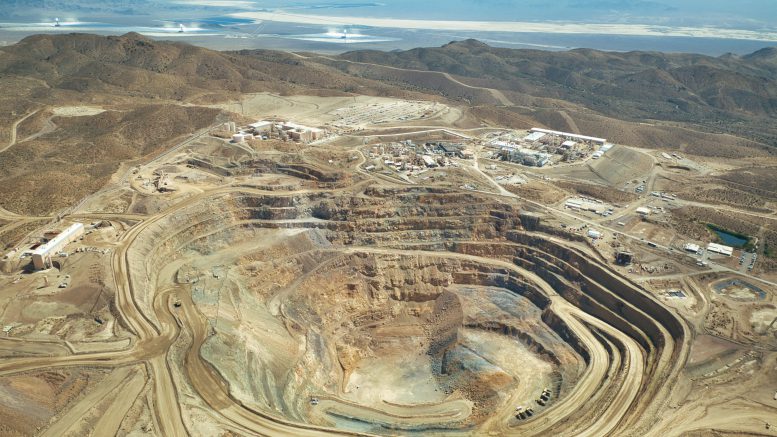
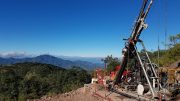
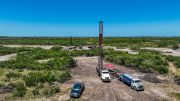
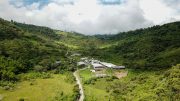
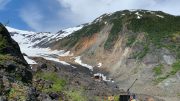
Be the first to comment on "US Snapshot: Mining and exploration for copper, gold, rare earths and more"